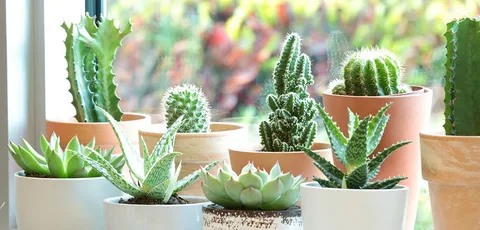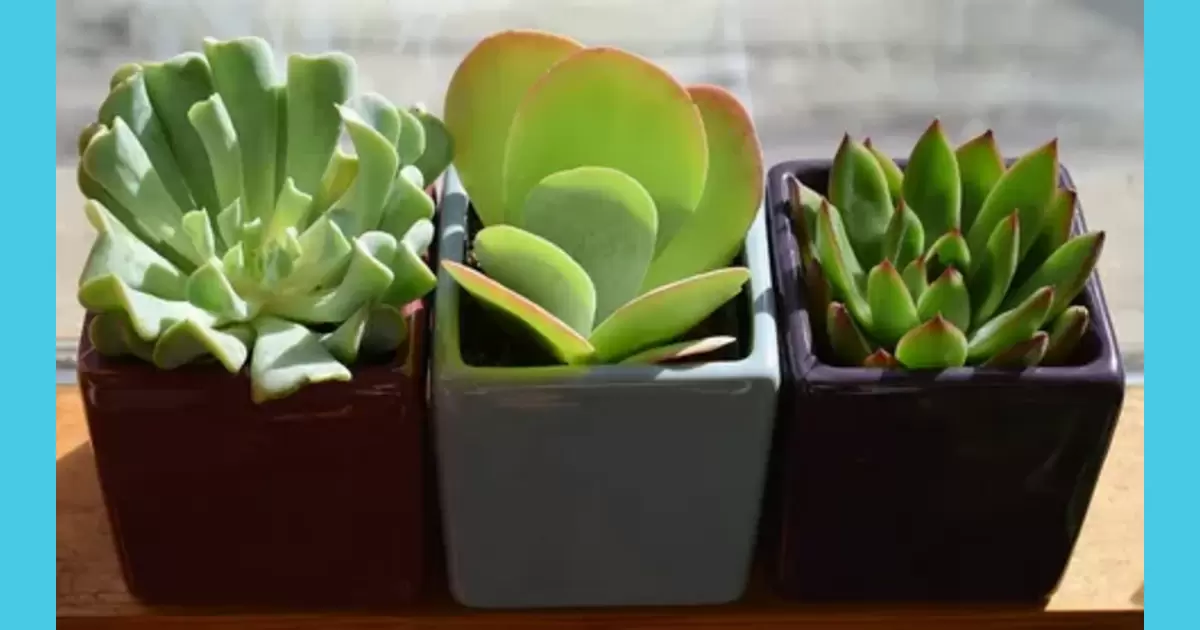Succulents are a diverse and fascinating group of plants known for their unique appearance and ability to store water in their leaves and stems. While they are prized for their compact size and low maintenance requirements, many gardening enthusiasts wonder just how big succulents can get.In this article, we’ll explore the growth patterns of succulents, factors that influence their size, and specific understanding the Growth Patterns of Succulents.
Curious about succulents? Wondering, How big do succulents get? Join us on a journey to discover the fascinating world of succulent growth from tiny marvels to magnificent giants. Let’s explore together.
The size of succulents varies widely, with some remaining petite at just a few inches tall, while others can grow to be several feet in height and width. The ultimate size of a succulent is influenced by its species, care, and environmental conditions. It’s essential to understand the specific requirements of your succulent to manage its growth effectively.
Factors Influencing Succulent Size

Species
The species of succulent you’re dealing with is perhaps the most crucial factor when it comes to learning make a succulent terrarium. Different species have inherently diverse growth patterns and sizes. It’s essential to research the specific species to understand its growth potential.
Age
Succulents, like all plants, grow over time. As they age, they tend to become larger. Some succulents can grow rapidly in their initial years and then slow down as they mature.
Environmental Conditions
The environment in which a succulent is grown significantly impacts its size. Factors such as sunlight, temperature, humidity, and soil quality can either promote or inhibit growth. Succulents in ideal conditions tend to grow larger than those in less favorable environments.
Container Size
If you’re growing succulents in containers, the size of the container can limit their growth. Smaller pots restrict the root system and, consequently, the size of the plant. Transplanting into larger containers can encourage larger growth.
Pruning
Regularly trimming or pruning your succulents can control their size. This is especially useful for succulents that have outgrown their space or for maintaining a desired shape and size.
Nutrition and Watering
Adequate nutrition and watering are essential for healthy growth, but overfeeding or overwatering can lead to excessive growth, which might not be desirable in all cases.
Genetics
Just like humans inherit traits from their parents, succulents inherit growth traits from their parent plants. The genetics of a succulent can play a role in determining its final size.
Examples of Large Succulents
Now that we’ve discussed the growth patterns and factors influencing succulent size, let’s look at some examples of large succulent species.
| Succulent Species | Size | Growth Habit | Habitat |
| Agave Americana (Century Plant) | 6-7 feet tall, 10-15 feet wide | Stem-like, rosette | Southern United States, Mexico, South America |
| Aloe Vera | 1-2 feet tall and wide | Rosette, stemless | Arabian Peninsula, cultivated worldwide |
| Euphorbia ingens (Candelabra Tree) | Over 30 feet tall | Tree-like with central stem | South Africa |
| Yucca elata (Soaptree Yucca) | 10-15 feet tall | Tall, tree-like, cluster of leaves | Southwestern U.S., northern Mexico |
| Adansonia digitata (Baobab Tree) | Over 30 feet tall | Thick, swollen trunk | Africa (Madagascar and mainland) |
| Kalanchoe beharensis (Velvet Elephant Ear) | 3-6 feet tall and wide | Upright stem-like, large fuzzy leaves | Madagascar |
Agave Americana (Century Plant)
Agave Americana is a notable example of a large succulent, with some specimens growing up to 6-7 feet in height and spanning 10-15 feet in width.
Growth Habit
This succulent has a stem-like growth pattern, with its leaves radiating outward from a central point.
Habitat: Native to the southern United States, Mexico, and parts of South America.
Aloe Vera
Aloe vera plants can grow to be about 1-2 feet tall and wide. When it comes to size, people often wonder, Big Do Succulents Get These plants have a stemless or very short-stemmed growth pattern and form rosettes. Native to the Arabian Peninsula, but widely cultivated worldwide for its medicinal properties.
Euphorbia Ingens (Candelabra Tree)
Size The Candelabra Tree can reach heights of up to 30 feet or more.
Growth Habit
It has a tree-like growth pattern with a central stem and multiple branches. Habitat Native to South Africa.
Yucca elata (Soaptree Yucca)
Size
This yucca can grow to heights of 10-15 feet.
Growth Habit
Yucca elata has a tall, tree-like growth pattern with a cluster of long, slender leaves.
Habitat
Found in arid regions of the southwestern United States and northern Mexico.
Adansonia digitata (Baobab Tree)
Size
Baobab trees are known to grow over 30 feet in height, and some exceptionally old specimens can be much taller.
Growth Habit
They have thick, swollen trunks and can be referred to as the “upside-down trees” due to their appearance.
Habitat
Native to Africa, particularly in Madagascar and mainland Africa.
Kalanchoe beharensis(Velvet Elephant Ear)
Size
This succulent can grow to be about 3-6 feet in height and width.
Growth Habit
It has an upright stem-like growth pattern and large, fuzzy, gray-green leaves.
Habitat
Native to Madagascar. These examples showcase the incredible diversity in size and growth habits within the world of succulents. As evident from these specimens, succulents can vary from small, tabletop plants to towering trees, depending on the species and environmental conditions.
Managing the Size of Your Succulents
While some gardeners may desire large succulents as focal points in their gardens, others prefer compact, smaller plants. Regardless of your preference, it’s essential to know how to manage the size of your succulents to maintain their health and appearance.
Here are some tips for managing
Ulent size
Container Size
If you’re growing succulents in pots or containers, choose an appropriate size. Smaller pots will restrict growth, while larger ones will allow the plant to reach its full potential. Transplant your succulent if it outgrows its current container.
Pruning
Regularly prune your succulents to control their size and shape. Remove dead or damaged leaves and trim back leggy growth to encourage a more compact form.
Light and Water Control
Adjust the amount of light and water your succulents receive. Reduced light and water can slow down growth, while more light and water can encourage growth. Be cautious not to overdo it, as this can lead to problems like etiolation.
Repotting
As succulents grow, their root systems may become crowded. Repot your succulent every few years to provide more space for the roots and to promote continued healthy growth.
Select Suitable Species
If you have limited space or want to maintain smaller succulents, choose species that naturally stay compact or have a slower growth rate.
Genetic Factors
Consider the genetics of the succulent. Some succulents have a genetic predisposition to be larger, while others naturally stay smaller. Selecting the right succulent for your space is key to managing its size effectively.
FAQ’S
Do succulents grow bigger in bigger pots?
Succulents generally thrive and grow better in appropriately sized pots, rather than larger ones.
Do succulents grow or stay the same size?
Succulents can grow in size if provided with the right conditions, but they generally grow slowly.
Do succulents just keep growing?
Succulents typically continue to grow, but their growth rate varies depending on factors like species, environment, and care.
Do succulents need a lot of space?
Succulents do not need a lot of space and can thrive in small containers or gardens with proper care.
Conclusion
Succulents are a diverse and captivating group of plants that can vary greatly in size. Whether you’re interested in cultivating a collection of petite rosettes or want to admire towering succulent trees, understanding the growth patterns, and the factors that influence succulent size is crucial.
By carefully managing environmental conditions and practicing proper care, you can ensure that your succulents achieve their desired size and remain healthy and beautiful additions to your garden or indoor spaces. So, embrace the world of succulents and watch them grow into the perfect size for your gardening aspirations.










